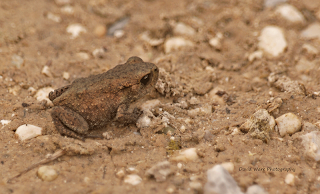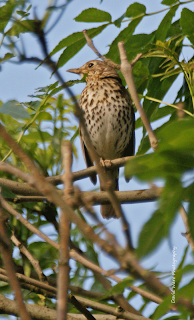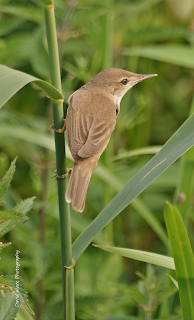Life in the garden continues to do well despite the weather.
Overhead we have numerous Swifts and Swallows picking up on the flies between
showers; in the garden itself we are regularly visited by at least 4 male Dunnock,
fledgling Blackbirds coming for the apples I continue to put out; and plenty of
House Sparrows, Chaffinch, Tits (Great and Blue), and Starlings.
The Robin has been noticeable by its absence, but we have
now started to see our Wren again. The Song Thrush that has been so melodious
over the past few months has gone quiet – hopefully it has found a mate rather
than moving on to a new area.
The Tree Sparrows have raised a second brood from the nest
box on the corner of the house. The parents have worked industriously, fetching food
and disposing of faecal sacks, but the box has now gone quiet, and we wait to see if they try for a third success.
Yesterday evening we had a return visitor, one of which we
have not seen in at least three years. I appreciate that for some readers the
sight of a Great Spotted Woodpecker in the garden is far from unusual, but for
us, this visit caused quite a bit of excitement. The bird was very alert all
the time it was attacking the peanut feeders, often seeking sanctuary in the
plum tree when it saw me taking photos. After quarter of an hour it flew off
towards the larger trees further down the village.
This morning I am going to pick up some suet and will
mix it with peanuts to see if we can’t tempt our new friend back again.













































